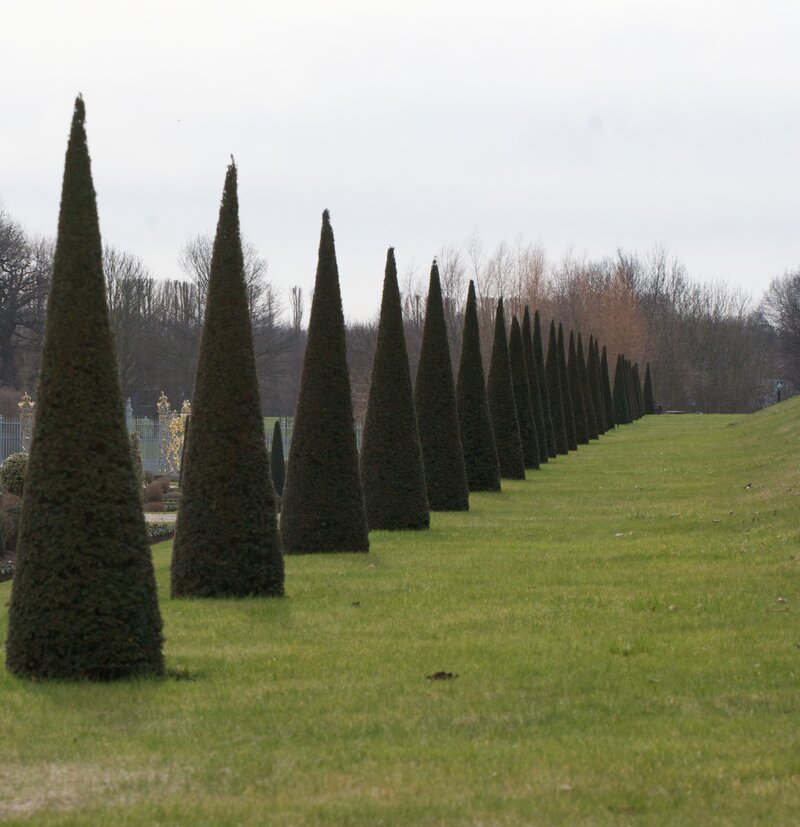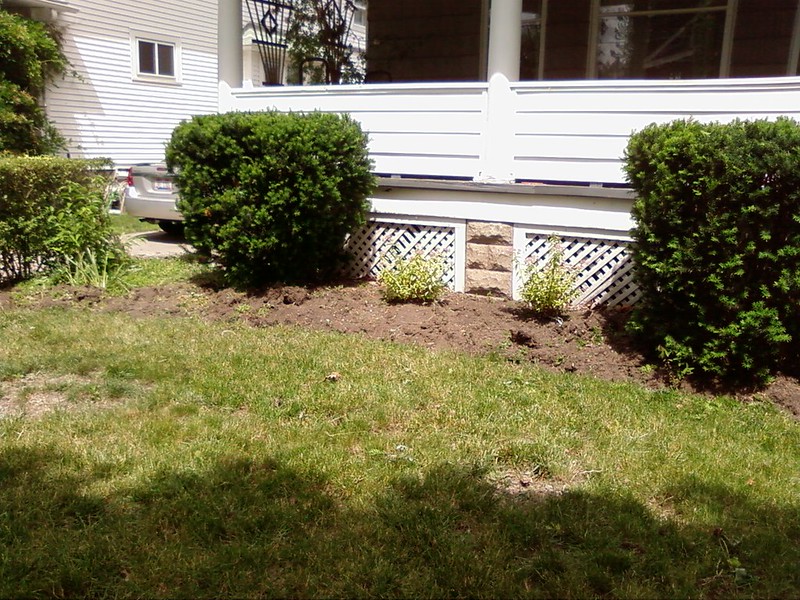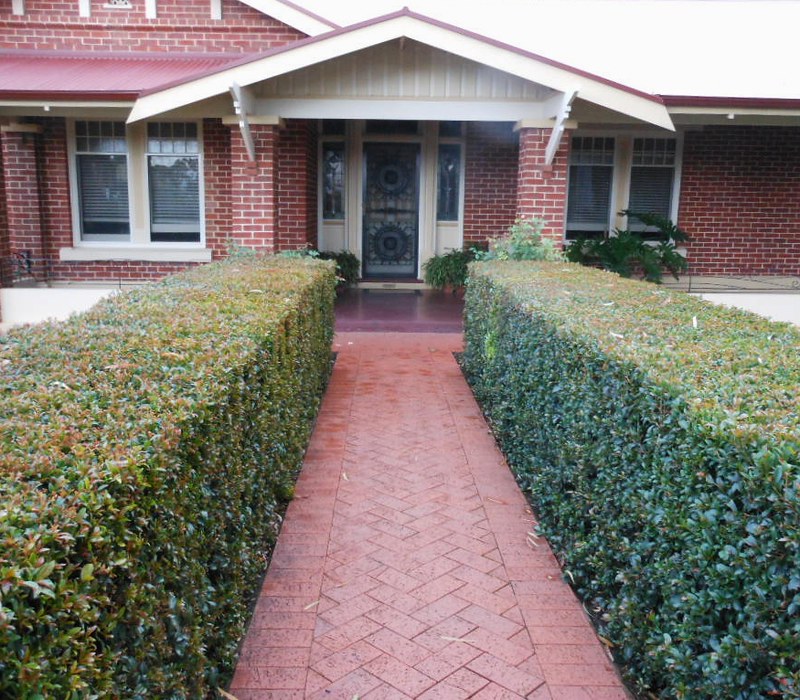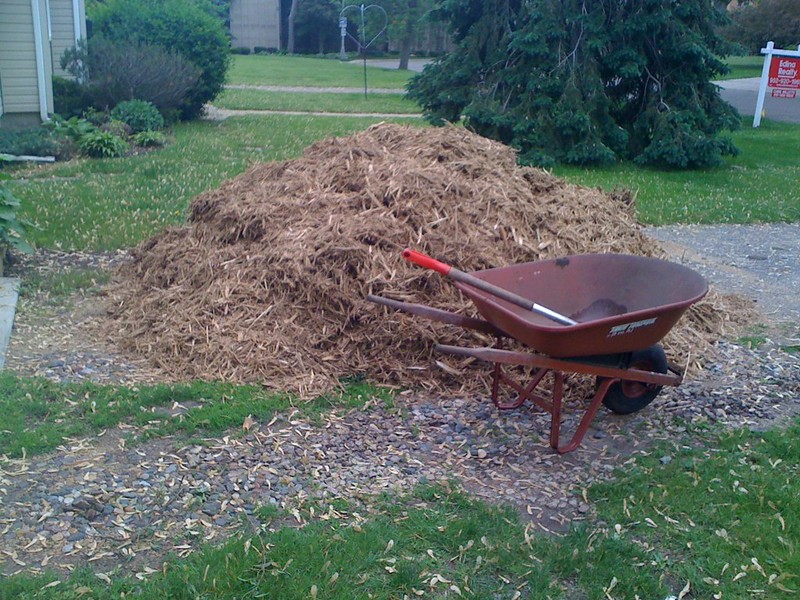Hiring a pro to trim your bushes typically runs between $20 and $46 per bush, depending on your location and the height of the bush or shrub. Tiny shrubs require less effort to trim, of course, while towering bushes that need ladders push costs higher.
Some landscapers skip the per-bush model and quote $45 to $75 per hour instead. In that, your final bill rides on how long the job takes and how many crew members are on site.
This pricing guide draws data from big and small cities across the U.S., so you can have a better idea of how much this lawn maintenance task will cost you.
Cost by Location
Your costs for hiring a professional to trim the bushes in your yard will vary depending on where you live. Typically, bigger cities and metro areas will have a higher cost due to the living costs, while smaller cities and towns will have lower costs.
Moreover, southern states go through a longer growing season, so you’ll need more frequent trimmings, and will end up paying more if you live there.
See the table below for an overview of the costs of bush trimming across the U.S.:
| City | Average Cost Range (Including Labor and Materials) |
| Northeast U.S. | |
| Philadelphia, PA | $21 – $54 |
| New York, NY | $22 – $63 |
| Southeast U.S. | |
| Miami, FL | $20 – $38 |
| Atlanta, GA | $21 – $42 |
| Midwest U.S. | |
| Minneapolis, MN | $20 – $47 |
| Chicago, IL | $21 – $55 |
| Northwest U.S. | |
| Seattle, WA | $19 – $38 |
| Southwest U.S. | |
| Denver, CO | $22 – $36 |
| Houston, TX | $20 – $56 |
Cost by Bush Size
Generally speaking, whether your contractor charges an hourly rate or by the bush, you’ll have to pay more to have a large bush trimmed than a small bush. As you might expect, the per-bush flat rate increases along with bush size.
Size affects per-hour pricing, too, since large bushes will take longer to trim, resulting in a higher bill.
| Bush Size (height) | Typical Cost Range |
| Small to medium (0 to 6 feet) | $19 – $30 |
| Large (6+ feet) | $26 – $63 |
Cost by Quantity

Having a large number of bushes (think 25 or more) trimmed at once can result in a lower price per bush. Some contractors give discounts for especially large jobs, similar to buying in bulk.
How much money you could save depends on your specific contractor. Ask about any bulk discounts when getting your quote.
Cost per Hour
Some landscapers scrap the per-bush model and bill strictly by the clock, typically $45 to $75 per hour, per pro. How long the job takes depends on the size, number of bushes, and their condition.
Compact and well-kept bushes might need only a quick touch-up, but if you have large shrubs that have gone several seasons without upkeep, they’ll likely require the use of a ladder, heavy shaping, and cleanup, so pros might charge past the standard range,
Pro Cost vs. DIY Cost

Even if your thumb isn’t particularly green, trimming your own bushes is possible. It can get more difficult, of course, depending on the size and location of your bushes. If you have an especially tall bush, for example, you may need to work from a ladder, which could be dangerous.
If you decide to take a crack at trimming your own bushes, you’ll need to spend around $165 on tools and equipment, including a cordless bush trimmer and pruning shears.
If you’re not handy with tools or if you have large bushes and overgrown bushes, it’s always best to hire a bush trimmer.
Other Factors That Affect Cost

There are several environmental and situational factors that can raise or lower the cost of professional bush trimming.
Location
If your bushes are too close to a building, fence, power lines, or other structures, they could be more difficult to trim than bushes out in the open. The same goes for bushes in the middle of a landscape bed or otherwise cornered into a tight spot.
Contractors who charge by the bush may ask for a higher rate for bushes in difficult locations such as these. If your contractor charges by the hour, your bill will similarly increase since maneuvering around the bushes without causing damage will most likely take more time.
Tip: Include the location of the bushes in your job description to get a more accurate quote from your contractor.
Debris Hauling
When a landscaper is done trimming your bushes, all those extra branches, twigs, and leaves must go somewhere. Many contractors will charge an additional fee to clean up and haul the debris for you.
Hauling fees can add to the total cost of shrub trimming, typically $30 to $100 depending on how much debris there is and whether or not the contractor will have to pay a dump fee.
Frequency of Service
Signing up for regular bush trimming service, usually once or twice a year, could result in a lower rate than paying piecemeal every time you want your bushes trimmed.
If your lawn care pro offers regular service plans, he or she most likely will suggest one as a way to save on the costs of trimming your bushes.
Mulching

If you have bushes planted in a landscape bed, you may want to tidy up the bed itself along with the bushes by installing fresh mulch.
Overall, mulching costs are hard to calculate without specific details since the price depends on the size of the bed and the type of mulch you want (i.e., wood chips, rubber, dyed).
FAQ
Generally speaking, the best time to trim your bushes is late winter or early spring, before the growing season. The worst time to trim is after August, as the new growth could suffer damage from having to endure winter so soon.
The rules are a little different for flowering bushes. Bushes that bloom from old growth (the branches you would probably trim back) do better when you trim them after flowering, whenever that may be for your specific plant.
On the other hand, you should trim bushes that bloom from new growth before they flower.
Trimming and pruning are very similar, so the words are often used interchangeably. The main difference is that trimming refers to cutting back overgrown bushes, while pruning means removing dead or diseased branches to improve the plant’s health.
Hire a Pro to Trim Your Bushes
Bush trimming is a necessary part of landscape maintenance, whether you do it yourself or hire a professional bush trimmer to do it for you. If you don’t have confidence in your own landscaping skills or if you’d rather just simply sit back and relax, a pro can make sure your yard looks pristine.
Maria Isabela Reis contributed to this article.
Read More:
– Pruning 101: How to Trim Bushes, Hedges, and Shrubs
– How to Trim a Tree
– Common Tree Trimming Mistakes
– Tree Trimming Cost Guide
– Hedge Trimming Cost Guide
Main Photo Credit: Solveig Osk / Flickr / CC BY 2.0